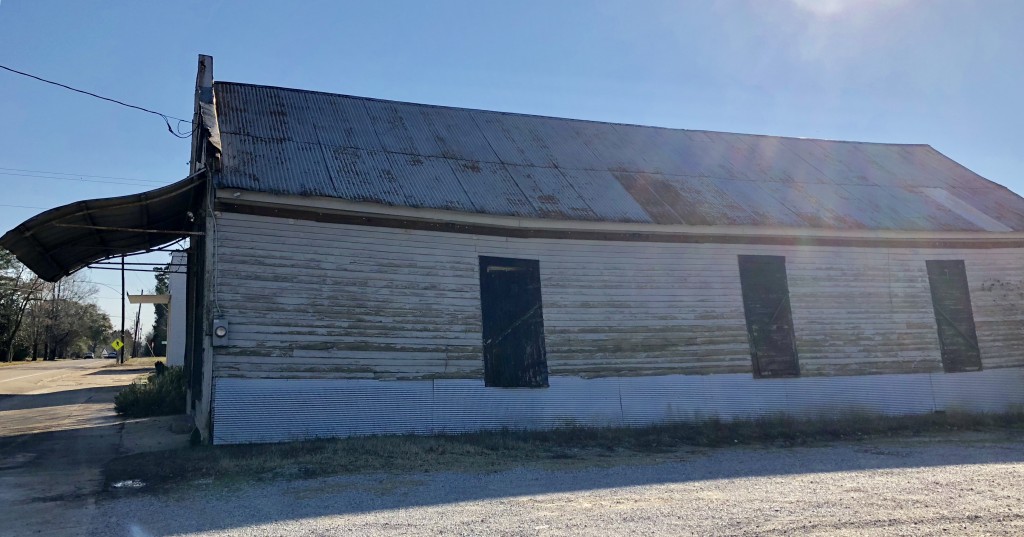I set out for the western end of an Alabama road. My destination was hardly a dot on the map, a place most may never go. Years before, I stood in an Auburn bookshop sifting through pages of an unfamiliar book. It mentioned a township near the Mississippi line. I knew someday, I would take that drive.
The midday sun pour across the swamps and flatlands as I trace the northern crest of Macon county. Winds sweep ripples o’er icy edges creek beds and ditches as they thaw. Weathered trees with gnarly trunks tangled and split stand defiant against the raw landscape. The coats of innumerable cattle shine in the light along rolling hillsides. I follow the memorial highway for a while, from Montgomery I trace it back to Selma, and then the map takes a northward turn.
In one town shambles of a Piggly Wiggly lay in wake of, process over progress, I imagine. Letters have fallen from the grocery store marquee. The town seems scarcely the heartbeat of a community anymore. Shuttered storefronts, barred windows and doors. On the corner the browning shroud of what was the town Christmas tree hangs suspended by strings. The red bells and bows are still bright and glisten, reflecting the nearby letters scattered along the sidewalk, P, I, G… In the cemetery, a local places flowers on a grave. The black cast iron fence marks boundary ’round plots distinctly separated by class and century. White washed homes embellished with hand hewn wooden gingerbread lean a little as their foundations shift, walls bend and rooftops to floors collide. I check the dashboard, making sure the car has plenty of gas. I anticipate I won’t see another station or store for miles.
Cows drink along the bank of the catfish pond. This part of the state is laced with hatcheries. The vista broadens and the road stretches straight into the distance as far as one can see. The GPS alerts that I have arrived. I slow the car and look for something recognizable. I stop to photograph an old church in the early evening light, then turn around and realize I’m surrounded by ruins of the Old South, the roots, and the stories that never die.
A raised wooden porch sways with the tide of time circling the cotton gin; the bricks look hand made. The mortar endures. I walk around the township’s old structures knowing this place as a whole could just as easily slip into the soil beneath one’s feet. Instead someone chose to defy convention, and resourcefully define sustainability for those here who live their lives. A couple of cars pass, and some stop at the only store in town, a tin roofed general store, next door to a handful of other primitive structures turned modern wonders in a creatively resourceful way. It’s a quiet place, this one horse town. Some might say desolate; I find it serene.
I drove west to the edge of nowhere, and there I found remnants of things quite familiar forged by people I’ve never met.
-Art is Life Expressed- Sarah West
To learn more about the work of Samuel Mockbee and the ongoing Rural Studio Program in Newbern, Alabama visit ruralstudio.org and samuelmockbee.net

